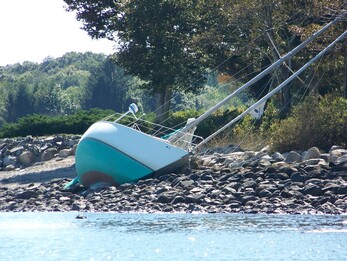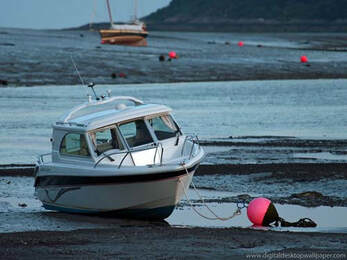Mooring Buoy Inspection, Repair & Installation
Sleep better knowing that your mooring system is up to the task. It's important to know that the components of your mooring system are in good shape and properly sized for environmental conditions and the length of your boat.
Thankfully, corrosion (rust) of steel mooring chain is a very slow process in fresh water and can takes decades before it weakens the chain links to the point where replacement is required.
However, the constant motion caused by wind and waves create friction where the chain rubs against itself or on something hard like the anchor weight...which can eventually weaken the chain's strength. Excessive chain wear combined with the mechanical forces caused by the chain kinking when it wraps around the mooring anchor, can cause the chain to break... and is a leading cause of mooring system failure.
Fact: Although commonly used, large concrete blocks are not the best solution as anchors for mooring systems as the bottom chain (called a "rode") tends to wrap up around the block on the lake bottom, kinking the chain and shortening the rode, resulting in damage to the chain and increased shock loading on the vessel's tie off points (hardware).
Fact: Keep in mind that concrete weighs approximately 60 % of its surface weight underwater... so a thousand pound block of concrete actually only weighs around 600 pounds on the lake bottom.
Fact: Most existing mooring buoy systems are not built or installed to proven and accepted industry standards. Will your boat insurance cover boat damage or loss if your mooring fails?
Fact: Transport Canada (Canadian Coast Guard) have started a program of inspecting mooring buoys in British Columbia and are ticketing systems not Transport Canada compliant.

Our professional team will inspect and video your existing mooring system from the anchor to the float. You will get a confidential, written report as well as a video of what we find.
Call or text Bart today for a "no obligation" quote: 250-254-5076 or email [email protected]
Call or text Bart today for a "no obligation" quote: 250-254-5076 or email [email protected]
